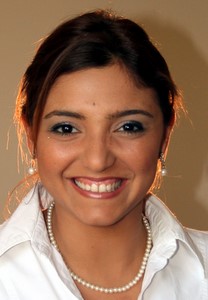
Members of panel, from right to left: Erik Duval, Robin Mason, John Dehlin, Terry Anderson and Andrew Ravenscroft
 Erik says with emphasis that he doesn’t care whether OER are paid for or not. As long it is available to be used, it does not matter who pays for it: government, universities, institutions etc
Erik says with emphasis that he doesn’t care whether OER are paid for or not. As long it is available to be used, it does not matter who pays for it: government, universities, institutions etc
Robin Mason: Does not think that OERs will pick up in terms of bein gpaid for etc. She thinks that acadmeics will produce it as a part of their contribution as an academic. She mentions television, libraries etc that did not change the university role. Content isn’t king. Content only is not enough. OER is just a modern version of a library. Although the OU went a step further than that, people need much more than that.
 John Dehlin: He wonders who came with the idea of providing educational online was seen a visionary. Nowadays it is widely spread and a respected business (he mentions the Open University). He is considering the vision of the OERs as the OpenCourseWare director. He says taht everybody is doing somethign in teh OER community but what is missing is a big goal, that can involve all of us. Open degree, certification etc. He said that we use more paper nowthan before the digital age. So OERs could increase the number of people who could enrol in formal education.
John Dehlin: He wonders who came with the idea of providing educational online was seen a visionary. Nowadays it is widely spread and a respected business (he mentions the Open University). He is considering the vision of the OERs as the OpenCourseWare director. He says taht everybody is doing somethign in teh OER community but what is missing is a big goal, that can involve all of us. Open degree, certification etc. He said that we use more paper nowthan before the digital age. So OERs could increase the number of people who could enrol in formal education.
Terry Anderson: says we do not have big goals until we have big crisis happening. Universities are not very culturally equipped for rapid change. There is a crisis coming in higher education and the demand for lifelong learning is going up. Until there’s a cultural crisis in instituions he doesn’t see it happening. In terms of assessment, in OERs, how do we assess? And what are we assessing? He thinks it is a subject that deserves seroius attention.
Andrew Ravenscroft: He says he hears the word ‘content’ far too much. He doesn’t think we need any more content (?). He woudl like to see more of open educational practcies around. He emphasises taht it is an exciting time in this perspective. Phase 1 for he was based on technology. Phase 2 now is to orchestrate content for teaching, for learning. It is tehn a far less negative problem. It is important to think in use, as well as reuse. He woudl like us to consider how to address significant learning problems with teh ‘use’, rather than the ‘reuse’ of OERs.
Members of panel have very different opinions: Andrew believes we do not need more content, Robin thinks that we do. Andrew thinks that we do not need to foucs on reuse of materials, Robin thinks we do.
Erik Duval thinks that there is a lot of very rubbish reserach around. Terry thinks that there aremany opportunites fo research – research is important otherwise we’ll keep reinventing the wheel. Andrew thinks that we have to ask teh right research questions about whta is changing. JOhn syays that we are inundated of big ideas that are tremendously successful: Google, YouTube, Wikipedia etc. So let’s not loose the spark of big ideas. In 5 years time we might see things changing. Let’s not loose hope on big ideas!
Filed under: OpenLearn2007 | Tagged: Future of OERs, OpenLearn2007 | Leave a comment »


 by Giovanni Fulantelli
by Giovanni Fulantelli
 Presenters from left to right: Tina Wilson, Rose Webb, Giselle Ferreira and Teresa Connoly.
Presenters from left to right: Tina Wilson, Rose Webb, Giselle Ferreira and Teresa Connoly. Rose Webb is very briefly talking about the rights issues, technical cosntraints, resources and the Integrity Model. Rose emphasises that in OpenLearn people had to learn from experience. The faculties gained acces to a document entitled “Things to consider” which would provide them with some guidelines on what to offer in terms of their courses to OpenLearn.
Rose Webb is very briefly talking about the rights issues, technical cosntraints, resources and the Integrity Model. Rose emphasises that in OpenLearn people had to learn from experience. The faculties gained acces to a document entitled “Things to consider” which would provide them with some guidelines on what to offer in terms of their courses to OpenLearn. Compendium map on the production process, by Teresa Connoly
Compendium map on the production process, by Teresa Connoly Giselle brings a few questions: Efficacy: How do we make this work?
Giselle brings a few questions: Efficacy: How do we make this work?
 By Freda Wolfeden & Bob Moon
By Freda Wolfeden & Bob Moon By Peter Bateman.
By Peter Bateman.





